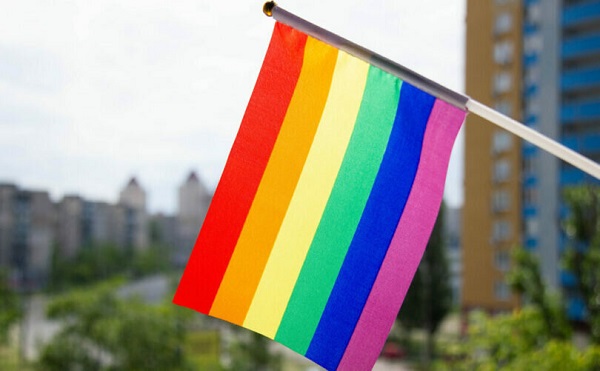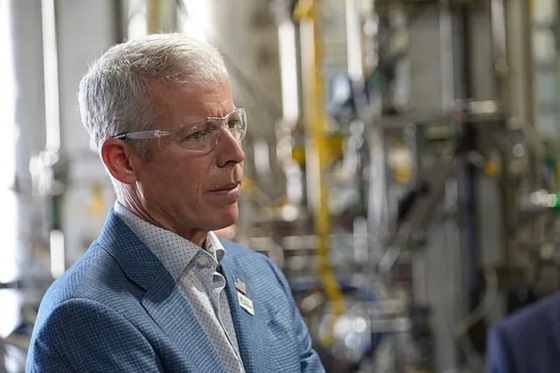Business
The dollar is down — and so are your wages

By Dan McTeague
As president of Canadians for Affordable Energy, I’ve had the privilege of calling the public’s attention to ongoing energy-related public policy issues which drive up the cost of living in this country. In that same vein, I’d like to call your attention to another matter which is making our lives more expensive. It is, functionally, a significant tax on all economic activity, but one which no political party ran on and none of our representatives in parliament voted for.
I’m speaking of the weakness of the Canadian dollar.
At the time of writing it takes 138 Canadian pennies to purchase a single American Greenback. That matters because most commodities which we consume are priced in U.S. dollars. So when I work on CAE’s gas price predictions — a project we’ve undertaken to help save Canadians money in a very concrete way — I have to continually multiply the commodity price of gasoline and diesel by 1.38 (or whatever the difference is at that moment) to get the cost in Canadian dollars.
The fact of the matter is, our diminished dollar functions as a drag on our economy, decreasing our purchasing power and raising the cost of doing business across the board.
Now, I know that there’s a common counterargument here, which is that a weak Loonie makes Canadian sourced goods and produce more attractive abroad. And that’s not wrong, but there are a few problems with the idea.
First, it’s less true in the highly integrated global economy of the 21st century than it’s been in the past. Maybe some of our farmers will make more money selling livestock and crops across the border, but they’re also spending a lot more on equipment and even phosphate-based fertilizers, which Canada imports to the tune of billions per year, particularly from the U.S.
Second, it’s short sighted. While it might bring about some benefits to exporters, especially in the short term, the lower the dollar falls, and the longer it remains low, the slower our economy is going to run. In the long run, a depressed Loonie is going to harm all of us.
So what is to be done to recover some value and get our currencies closer to parity? Well, one thing we could do is unleash the Canadian energy juggernaut.
Our country has been blessed with abundant natural resources, especially oil and natural gas, but the Trudeau-Carney Liberals who have been running the country since 2015 have bent over backwards to appeal to the Keep-it-in-the-Ground Net-Zero activists in their base. They’ve pushed legislation like Bill C-69, the “no new pipelines act;” Bill C-48, the Oil Tanker Moratorium Act which significantly reduces our ability to export our natural resources; and Bill C-59, which bans businesses from touting the environmental positives of their work if it doesn’t meet a government-approved standard.
They’ve enacted the so-called Clean Fuel Standard, which requires fuel suppliers to reduce the carbon intensity of their products, elevating the cost to the consumer. And then there’s the whole bait-and-switch they’ve pulled on the Carbon Tax, zeroing out the public-facing Consumer Tax, while doubling down on the Industrial Carbon Tax.
Talk about a drag on the economy!
It shouldn’t be this way. The oil and gas industry is Canada’s “golden goose,” in the memorable phrase of economists Philip Cross and Jack Mintz, which drives “exports, productivity, incomes, and government revenue.” They are, in short, the backbone of our economy.
At a time when that economy is faltering, we should be doing everything we can to grease the wheels, to pump up production, and get things humming again.
A stronger dollar will mean a healthier, more affordable Canada. Let’s make it happen.
Business
Carney government plans to spend millions convincing young Canadians about ‘climate emergency’

From the Fraser Institute
By Matthew Lau
$396,213 will go towards an organization that will create “Indigenous-led environmental literacy material to support kindergarten to Grade 12 teachers in Six Nations and Hamilton schools to ground youth environmental literacy in Haudenosaunee cultural perspectives.” According to that organization’s blog, “climate resilience” demands that we should be “rejecting capitalism and heteronormativity” and “environmental racism.”
In a recent announcement, the Carney government detailed more than $14.4 million in new spending for 17 projects to “empower young Canadians to address climate change.” The $14.4 million is just the latest round of funding out of a planned $206 million over five years. The purpose of the “Climate Action and Awareness Fund,” as the government calls it, is essentially to increase public concern about climate change.
To justify this $14.4 million in spending, Liberal MP Taleeb Noormohamed said “At this critical juncture, when our planet is facing a climate emergency, environmental literacy for young people is essential.”
Ironically, if the goal is to improve environmental literacy, one of the first things the government should do is stop saying “climate emergency”—a wholly inaccurate phrase meant to increase alarm. The evidence simply does not support claims of a climate emergency. Indeed, relative to a hypothetical planet without climate change, even worst-case scenarios suggest climate change would likely only reduce global per-person GDP (an indicator of living standards) by something like 16.5 per cent by 2200.
To be sure, 16.5 per cent of GDP is significant. But just a 16.5 per cent cut to incomes today would still leave us far better off than people who lived 175 years ago. A 16.5 per cent cut to the incomes of people living 175 years from now would almost certainly still leave them considerably better off than we are today. That’s no emergency.
Descriptions of the 17 projects further erode claims about an emergency. One project set to receive $939,592 in taxpayer money “will provide environmental knowledge, service-learning, and leadership opportunities for young Canadians, particularly Indigenous, BPOC, 2SLGBTQ+ youth and other underserved communities. This project will engage youth in community-based actions linked to the major environmental crises and provide training for educators to best integrate environmental education into their teaching.”
Imagine a real emergency for which you dial 9-1-1—say, an apartment building consumed in fire. You simply want the firetruck to arrive and firefighters to extinguish the fire as quickly as possible. You do not care if the firefighters are Indigenous, Black or from a sexual minority. Similarly, if climate change was really an emergency, government would direct all the resources towards whoever and whatever could mitigate it most effectively, as opposed to distributing resources according to racial or other diversity targets.
Other taxpayer-funded projects include $782,922 to help children and youth in northwestern Ontario and eastern Manitoba “become climate leaders in their communities.” And $342,524 to give young people, particularly in Alberta, “perspectives to help them overcome current environmental challenges and participate in eco-advocacy.”
Another $396,213 will go towards an organization that will create “Indigenous-led environmental literacy material to support kindergarten to Grade 12 teachers in Six Nations and Hamilton schools to ground youth environmental literacy in Haudenosaunee cultural perspectives.” According to that organization’s blog, “climate resilience” demands that we should be “rejecting capitalism and heteronormativity” and “environmental racism.”
Based on the project descriptions and organizations receiving the taxpayer money, a reasonable person might deduce that at least a significant chunk of the $14.4 million in the latest funding round—and the total $206 million over five years—will pay for politically charged activism targeting young people, not actual educational initiatives. This spending should be cancelled. The last thing taxpayers need is more Greta Thunbergs and higher taxes.
Business
Canada offering 12 months of income to LGBT ‘refugees’

From LifeSiteNews
Canada’s Liberal government is giving a year’s worth of taxpayer-funded income and settlement support to LGBT ‘refugees’ through a government-assisted program.
Canada is now offering 12 months of income for LGBT-identifying refugees moving to Canada.
The Government of Canada, under the Liberal Party, is encouraging “LGBTQI+” refugees to move to Canada by offering them taxpayer-funded income for up to 12 months in addition to various other programs.
“The UNHCR, Rainbow Railroad and other referral organizations can identify and refer LGBTQI+ refugees to be resettled under the Government-Assisted Refugees Program,” the government webpage read.
“Refugees resettled under this program get 12 months of income and settlement support through the Resettlement Assistance Program,” it continued.
The program also offers financial aid and incentives through private sponsorships. Canada also renewed their partnership with the Rainbow Refugee Society until the end of 2029.
Under the program, Canadian taxpayers pay for the first three months of income and private sponsors pay the remaining nine months.
“We encourage refugee sponsorship organizations, as well as organizations across the country that support two‑spirit, lesbian, gay, bisexual, transgender, queer, intersex and additional sexually and gender diverse (2SLGBTQI+) people to privately sponsor refugees who face violence and persecution,” the Liberals wrote. “This includes those persecuted based on SOGIESC.”
This is not the first time that Liberals have promoted immigrating to Canada to LGBT individuals.
As LifeSiteNews previously reported, this spring, posters funded by the federal government appeared across Vancouver Island, British Columbia, encouraging mass migration of immigrants who embody LGBT values.
Many Canadians have responded to the refugee program, condemning spending their taxpayer dollars to bring in LGBT activists.
“As a hard working Canadian all my life, paying my taxes and contributing to our health care system, it makes me sad and angry that we are just giving it all away,” one wrote.
“Sounds like they’re buying more liberal votes,” another commented.
“All this while thousands wait endlessly for vaccine injury compensation that was supposed to be given,” another declared.
Indeed, while thousands of Canadians are waiting for vaccine injury compensation and even to receive basic health care, the Liberal government is throwing taxpayer dollars at LGBT groups.
In June, Prime Minister Mark Carney promised $1.5 million in taxpayer funds for LGBT “pride” parades.
-

 COVID-191 day ago
COVID-191 day agoTamara Lich’s Prosecution Is A Warning To Western Canada
-

 Alberta1 day ago
Alberta1 day agoFederal climate plan could trigger Alberta recession
-

 Business8 hours ago
Business8 hours agoCarney’s Move to Strip Religious Charities Undermines Canada’s Foundations, Liberal Elder Warns
-

 Bruce Dowbiggin1 day ago
Bruce Dowbiggin1 day agoUnder Pressure: Boo Jays Become Blue Jays. Now What?
-

 espionage2 hours ago
espionage2 hours agoBeijing’s Secret Biowar: National Security Experts Probe Fentanyl and Expanding Viral Bioweapons Program After COVID-19 Lab Leak
-

 Business20 mins ago
Business20 mins agoCarney government plans to spend millions convincing young Canadians about ‘climate emergency’
-

 Economy1 day ago
Economy1 day agoConservatives finally enter the climate fight armed with science
-

 Economy3 hours ago
Economy3 hours agoCanada’s Lost Energy Decade!





